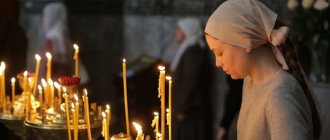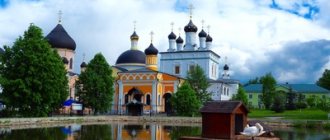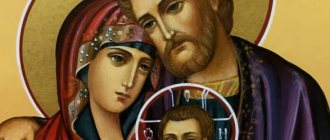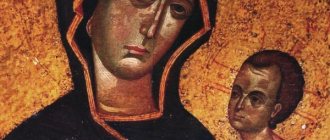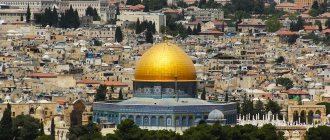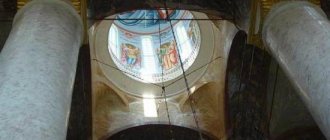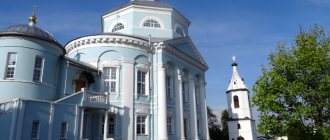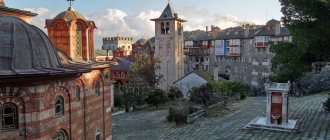Only with us: Enter promotional code bonus2021 in the coupon field when placing an order until March 31, 2021 and receive a 25% discount on everything!
Today, when Russia, after decades of atheistic madness, is returning to its spiritual roots, it is gratifying to see millions of its inhabitants who have realized that of all the paths in life, the main one is the road to the temple. Evidence of this revived religious consciousness is the need to visit the holy places in which our land is rich. Only the holy places of the Moscow region are one and a half thousand churches and twenty-four monasteries. Let's talk about some of them.
The main center of the country's spiritual life
According to statistics, every year the largest number of pilgrims are received by the ancient walls of the Trinity-Sergius Lavra in the town of Sergiev Posad near Moscow. It is named after its founder, St. Sergius of Radonezh, who settled in 1337 with his older brother Stefan on Makovets Hill, not far from the Intercession Monastery in the village of Khotkovo.
Soon the brothers built a church from logs, which was consecrated in honor of the Holy Trinity. Other hermits, seekers of soul salvation, began to join them. Gradually a community was formed, which was transformed into a monastery. With the holiness and purity of his life, St. Sergius elevated the monastery he created to the level of the spiritual center of the Russian lands, which became the support of the Moscow princes. It is known that in 1380, it was here that Dmitry Donskoy received his blessing while going to the Battle of Kulikovo.
After the blessed death of its founder in 1392, the monastery continued to develop and, despite the fact that it was completely burned by the Tatars in 1408, it managed to be revived and take a leading place among the religious centers of the state. His role in countering the Polish invaders led by False Dmitry is known. In 1742, Empress Elizabeth granted it the status of a monastery.
Like many holy places in the Moscow region, in the years after the Bolsheviks came to power, the Trinity-Sergius Lavra was closed. This happened in 1920. Only a quarter of a century later the government allowed its activities to be resumed, but within very limited limits. The real turning point came only with the advent of perestroika and democratic reforms. Today, about two hundred monks save souls within the walls of the monastery. An Orthodox publishing house has been created and is successfully operating in the monastery, and the reception of hundreds of thousands of visitors to the monastery has been organized.
Holy places of the Moscow region: northern direction
One of the most significant religious centers north of the capital is the Joseph-Volotsky Monastery, located sixteen kilometers from Volokolamsk. It was founded in 1479 by Saint Joseph (in the world Joseph of Volotsky), who left a significant mark on the history of the Russian church. It was built, like most monasteries of that time, from wood, but in ancient Rus' monasteries often played the role of defensive structures, and for this reason it was soon surrounded by a stone wall.
The 16th century was a time of great transformations in the monastery. A stone church in the name of the Dormition of the Mother of God was built and consecrated, and numerous household and outbuildings were erected. In certain periods of Russian history, the monastery occupied a leading place in the spiritual life of the country. But in addition to its direct purpose, the monastery also played the role of a prison. It is enough to mention that Tsar Vasily Ivanovich Shuisky was imprisoned in one of his cells. Many other historical figures became its prisoners.
Tours of the holy places of the Moscow region often visit an interesting landmark located in the village of Darna, northwest of the capital. This is the Church of the Exaltation of the Holy Cross, built in 1895 according to the design of the architect S.V. Sherwood. Its appearance is striking in its beauty, harmoniously combining elements of ancient Russian architecture and late classicism. Constructed of red brick, the building is decorated with decorative white stone trim, which gives it a festive look.
The main shrine of the church is the grave of Blessed Alexandra, located next to it, whose honest remains were transferred here from the village of Onufrieva. Many people come to the place of her burial who considered it important for themselves to visit the holy places of Moscow and the Moscow region. Healing from illnesses is a well-deserved reward for those who, with true faith and humility, turn to her in prayer requests. All facts of miraculous deliverances from illnesses are recorded in a special book, updated every year with new evidence.
Excursion: Holy Abodes of the Moscow Region (meditative pilgrimage) Excursion code: 5901
As part of our excursion, we will visit monasteries near Moscow, interesting for their history and architectural complexes, monasteries that once served as a stronghold in the fight against the “schism of the Old Believers” in the Moscow region. The famous “Moscow Lavra” Nikolo-Ugreshsky Monastery will be the beginning of our journey. Guslitsky Spaso-Preobrazhensky and Pokrovsko-Vasilievsky monasteries, former missionary centers, were revived to spiritual life. And next to it is the world that they opposed, the world of the “indigenous” folk old faith. The Old Believer Church of the Nativity of Christ in Bolshiye Dvory (Andronovo) is an ancient house of prayer, miraculously preserved to this day.
Nikolo-Ugreshsky Monastery
- the pearl of the monastery chain surrounding the capital. This is a picturesque place where in 1380, on the way to the Kulikovo Field, the army of Grand Duke Dmitry Ivanovich stopped to rest. It was here that the icon of St. Nicholas the Wonderworker appeared to the blessed Prince Dmitry, strengthened the Prince with faith and hope, and “this all sinned his heart.” Since then this place has been called Ugresha. Returning from the Battle of Kulikovo, they served a prayer service at the site of the miraculous appearance of the icon, and the noble Prince Demetrius ordered the construction of a temple and monastic monastery here in the name of St. Nicholas. Like other monasteries located near the capital, the Nikolo-Ugreshsky Monastery experienced many disasters during the difficult years for our Fatherland, it burned and went bankrupt, but then was revived and beautified again. Since the 1840s, the monastery has been continuously rebuilt over the course of half a century. Walls were renewed, old and new churches were rebuilt. Hotels were built for pilgrims. This era was a time of unprecedented prosperity for the monastery. The monastery was one of the most visited. The grandiose Transfiguration Cathedral, built by the architect A.S. Kaminsky 1880-1894, became the dominant feature of the monastery ensemble.
Guslitsky Spaso-Preobrazhensky
the monastery was founded in 1858. by order of Metropolitan Philaret of Moscow and Kolomna, who instructed Hieromonk Parthenius to find a suitable place to lay the foundation of the monastery. The main goal for achieving which the decision to build this monastery was made was the desire to convert the Old Believers who traditionally inhabited this area to Orthodoxy. In the center of the monastery is the nine-domed Transfiguration Cathedral with beautiful paintings. The period of greatest prosperity is considered to be 1872-1895. Currently, the monastery is actively conducting spiritual, educational and missionary activities.
History of the Pokrovsko-Vasilievsky Monastery in the city of Pavlovsky Posad
dates back to the mid-70s of the 19th century. Thanks to its organizers and trustees in the person of the hereditary and honorary citizen of the city, a major manufacturer and benefactor Yakov Ivanovich Labzin and his family, the monastery in a short time became one of the most beautiful monasteries of the Moscow Diocese in terms of church decoration and the internal life of the nuns. Holy Righteous Vasily was born in 1816 in the village of Evseevo, Bogorodsky district, Moscow Province. Vasily Ivanovich’s unfeigned piety and ascetic life attracted the hearts of many Old Believers to him, who, thanks to his spiritual and moral influence, reunited with the Orthodox Church.
Old Believer community in the village. Andronovo
originates from churches in the name of the Nativity of Christ and St. Tikhon of Amathusia at the churchyard near Lake Danilishchevo, which is now known as the village of Zaozerye. This churchyard probably existed back in pagan times and once could have included a prayer site for the Slavic tribe of Vyatichi who lived in this region, a sacred grove above the lake and a burial place. The baptism of the Vyatichi took place in the 12th century. Most likely, the first temple was built close to this time. In the Zaozersky parish itself there is a legend that the church was founded according to the vow of St. Prince Daniil of Moscow, who allegedly, while hunting, got lost in the local forests (now destroyed) and came out to this lake.
The current house of worship in Andronovo was built in 1883 on land donated by a wealthy peasant (who also had a small factory at his house) Andrei Agafonovich Plokhov. For quite a long time, the peasants could not begin worship there, until the mid-1890s. Until the famous Manifesto of April 17, 1905, “On strengthening the principles of religious tolerance,” the liturgy was celebrated secretly, in a camp brocade altar, which was dismantled and hidden after the service. Later, a permanent throne and an iconostasis with the royal doors were built, and a large chandelier was purchased. The prayer house was closed in 1938, but reopened in 1947.
Meeting at 08:45. Departure at 09:00 from the station. metro station "Kashirskaya".
Return to the "Shosse Entuziastov" metro station.
Source
A village that remembers Dmitry Donskoy
Another place that is often visited by excursions to the holy places of Moscow and the Moscow region is the village of Spirovo, where there is a church built in honor of the Entry into the Temple of the Blessed Virgin Mary. This village is very ancient. Back in the 15th century, Moscow Prince Dmitry Donskoy granted it to Joseph of Volotsky, who later became one of the most famous saints of the Russian Orthodox Church. The monk founded a monastery there, on the territory of which the current church was built.
In 1825, the wooden building, which had become dilapidated, was replaced by a stone building, erected with voluntary donations from monastery pilgrims. Over time, a parish school for children from low-income families was opened at the church, and a few years later - a zemstvo school. Among the benefactors who made monetary contributions here were the families of A.S. Pushkin, P.N. Vorontsov and V.Ya. Telegina.
In the same village there is another place that attracts excursions to the holy places of the Moscow region. This is the miraculous Virgin Mary spring located nearby, equipped with a bathhouse. The Monk Joseph initially settled here, and from here he and his associates set out daily to work on the construction of the buildings of the future monastery. Holy places in the Moscow region with a font are not uncommon, but this source is widely known, first of all, for its healing properties and many cases of relief from ailments. Hundreds of thousands of pilgrims visit it every year.
Remembering the holy places of the Moscow region, one cannot help but mention the Church of the Nativity of the Blessed Virgin Mary in the Volokolamsk district of the Moscow region. For its architectural and artistic features, it was recognized as an object of cultural heritage of Russia. Its construction lasted for almost thirty years - from 1865 to 1893. The style of the temple building, which is distinguished by its extraordinary beauty, is attributed by art historians to Russian traditionalism, which was very widespread in the second half of the 19th century.
Bus excursions
As part of our bus trips, we invite you to visit the capital’s iconic religious sites. So, a bus tour will take you to the monasteries:
- Andronikov - in the Spassky Cathedral you will see frescoes by Andrei Rublev;
- Pokrovsky - you will be able to venerate the relics of Mother Matronushka;
- Novospassky - with the tomb of the Romanov family;
- Simonov - pray at the icon “Softening Evil Hearts”, revered by the Orthodox;
- Zachatievsky, whose history begins back in 1360;
- Novodevichy, where the Orthodox architectural complex is located;
- Danilovsky is one of the first in Moscow;
- Donskoy, which was created by order of Boris Godunov back in the 16th century.
We offer a unique walk to seven Moscow churches within one bus tour. You will visit the buildings:
- St. Nicholas (in Kotelniki),
- Nikola (in Podkopaja),
- Nikola at the Tagansky Gate,
- Nativity of the Blessed Virgin Mary,
- Trinity (in Serebryaniki),
- The beheading of John the Baptist,
- Dormition (in Gonchary),
- Peter and Paul.
Holy places of the Moscow region: eastern direction
There is an amazing place in the Pavlovo-Posad district of the Moscow region. This is the Church of the Holy Trinity, built in the 18th century on the site of an ancient pagan temple, named after the ancient ritual games - Chizhi. The name of the Orthodox Church and place of pagan worship gave the area its name. It is known as the Trinity-Chizhi tract.
The church and the place where it was built are surrounded by many legends and are revered by both believers and supporters of the occult. In the “Encyclopedia of Mysterious Places of Russia” V.A. Chernobrova Siskins are referred to as a geoactive zone and an area of anomalous activity. The same publication provides facts about the observation of various UFOs over it.
Not far from the village of Chelokhovo, Yegoryevsky district, Moscow region, there is another unusual place. This is a huge stone, which, according to historians, was the object of worship of the ancient pagans. But later, when Christianity firmly gained its position, Orthodox missionaries came to these places, and, having consecrated the stone, as well as a nearby spring, they first built a chapel here, and then the church of St. Nikita, the heavenly patron of this region.
When the famous church schism occurred in the 17th century, Old Believers began to actively populate this place, fleeing persecution by the authorities, and it received the name Abode of Peace. Nowadays, when the official church has recognized the legitimacy of the Old Believers, and their traditions are also revered as blessed, many pilgrims come to these places, but, unfortunately, the form of worship here is often of an occult nature, which is expressed in various symbols that are not accepted in Orthodoxy.
West of the capital
In the Mozhaisk district of the Moscow region there is the village of Kolotskoye, famous for the nearby Assumption Convent, founded in 1413. The chronicle of the monastery contains two significant events: the discovery of the miraculous icon of the Mother of God and the stay in 1812 within the walls of the monastery of Field Marshal M.I. Kutuzova. Its headquarters were located here shortly before the start of the Battle of Borodino.
The miraculous icon of the Mother of God, kept in the monastery church, made the village of Kolotskoye as popular and visited as other holy places in the Moscow region. The healing granted through prayers before her makes pilgrims flock here from all over Russia. During the difficult years of fighting against God, the monastery was abolished and its buildings were destroyed. Despite the great risk, the miraculous image was preserved by believers in their private homes. Only with the advent of democratic changes did the monastery begin to revive and the holy image took its rightful place.
Monasteries of the Moscow region with miraculous icons
The Assumption Kolotsky Convent found its refuge at the beginning of the 15th century. The history of the temple begins with the miraculous discovery of the icon of the Mother of God. A monastery was erected on this site, which later became a monastery for women.
After the revolution, the holy monastery was destroyed, and the icon was hidden by believers. But in the 70s of the 20th century it was lost and now there is a copy of it in the temple. Believers from all over flock here to find healing from ailments.
The Vysotsky Monastery is located on one of the hills of the city of Serpukhov, hence the name.
It was founded in memory of the victory over the Tatar-Mongols. He became famous for the icon “The Inexhaustible Chalice”, which eliminates the sin of drunkenness.
Here is the Holy Trinity Belopesotsky Convent, one of the most ancient in the Moscow region.
A legend is connected with the miraculous copy of the icon of the Mother of God “Quiet My Sorrows”, which resides here, that at the end of the 19th century she saved the small village of Malino from cholera. So it became customary to surround the settlements with shrines.
The village of Semenovskoye, Mozhaisk district, is known to many pilgrims for the miraculous icon of the Savior Not Made by Hands, which was a shrine of the Revel regiment.
The Spaso-Borodinsky Convent was built at her own expense by the widow of General Tuchkov, who died in the battle with the French.
Miraculous springs
The holy places of the Moscow region are especially popular these days, helping pilgrims get rid of ailments or achieve any desired goal. Such places include, for example, miraculous springs. There are about a hundred of them near the capital. One of the most famous and, according to pilgrims, the most miraculous, is the spring located in the David Desert in the Chekhov region.
It was founded by the Monk David five hundred years ago on the banks of the Lopasni River. The monastery still operates there today, and ten kilometers from it there is a courtyard. On its territory there is a church and a holy spring, equipped with two baths for the convenience of pilgrims. According to the testimonies of many who have experienced its miraculous properties, it is known that its waters most effectively heal diseases of the eyes and digestive organs.
Other holy places in Moscow and the Moscow region have also been glorified with extraordinary evidence of the manifestation of God’s Grace. Healing from physical and mental illnesses attracts hundreds of thousands of pilgrims to them every year. Many such places are widely known, for example, the Savvino-Storozhevskaya monastery, located near Zvenigorod. Its founder was the closest student of St. Sergius of Radonezh - the monk Savva, who came to these places more than six hundred years ago.
Not far from the monastery there is a cave in which the saint of God lived, and next to it is a miraculous spring. It is equipped with male and female swimming pools. Many who visit the monastery take with them bottles of holy water, as it is known that it helps with various ailments, and especially with heart disease. In addition, the monastery is famous for its kvass and bread, the likes of which are difficult to find anywhere else.
Thematic tours
For those who wish to get acquainted in more detail with the history and activities of the city’s religious places, we offer a series of thematic walks.
- In the Novodevichy complex. The monastery houses cathedrals and churches of the Mother of God.
- To the Cathedral of Christ the Savior. With a visit to the Church of the Transfiguration, the Museum at the establishment and observation platforms.
- To the Vysoko-Petrovskaya monastery, which was built during the time of Ivan Kalita and developed under Peter I. On the territory there are 18 religious buildings, including churches with unique shrines. Here you will see the Miraculous Kazan Icon of the Mother of God, etc.
Three miraculous keys
Remembering holy places in the Moscow region that help against diseases, we should also mention the amazing spring named after Gremuchy, located fourteen kilometers southeast of Sergiev Posad, near the village of Vzglyadovo. It fully lives up to its name, since the springs that form it flow from the crevices of the slope, falling from a height of twenty-five meters. The noise they make carries far across the surrounding area.
The source consists of three independent keys, each of which has its own name - Faith, Hope, Love, and brings healing from a certain group of diseases. Thus, it has long been noted that the first helps those suffering from heart ailments, the second - mental disorders, the third - women's diseases. Scientists who conducted a study of the miraculous water noted that its composition was close to samples taken from the famous springs of Kislovodsk. But you should drink it in limited quantities, as it contains a high percentage of radon.
By the way, when they list the holy places of the Moscow region that help to get married, they often mention the Gremuchiy spring, or rather, one of its springs that is called “Love”. Unfortunately, there is no special book in which the testimonies of those to whom its waters brought family happiness would be recorded. It’s a pity, because in Rus' it has long been customary to record miracles given by shrines. How many interesting and touching stories would happy brides tell in their entries!
Source in the Tyutchev estate
Holy places in the Moscow region are often associated with the names of prominent figures of Russian culture. One of these places is the estate located in the village of Muranovo, Pushkin district. Its history is closely connected with the names of Pushkin, Tyutchev, Gogol and Aksakov. On the territory of the estate there flows a spring called Barsky. Since time immemorial, everyone who washed themselves with its waters received healing from ailments.
In the first half of the 19th century, the estate came into the possession of the family of the outstanding Russian poet F.I. Tyutcheva. Being a deeply religious man, he considered it necessary to build a temple on the territory of his estate next to the miraculous spring. When the work was completed, it was solemnly consecrated in honor of the Savior Not Made by Hands. From then on, it became a tradition to make religious processions to the source, accompanied by the rite of blessing of water. Nowadays, scientific research has shown that this water has high biological activity. Proof can be the fact that plants watered with it develop better than their counterparts.
Zvenigorod miracle stone
There is no clear answer to the question of where it came from and what its purpose is. This giant reclines on the territory of the Church of the Icon of the Mother of God in Zvenigorod.
Some parishioners bury notes near him, pray, and ask for help. The clergy, on the contrary, are skeptical. They believe that pagan symbols have no place in Orthodox life.
Every person should visit the holy land near Moscow at least once.
Graceful help in childbearing
Mentioning the holy places of the Moscow region that help to get pregnant, one cannot ignore the miraculous stone located in Kolomenskoye, popularly called “Goose”, or “Girl”. There is a source next to it. Women have long come here who dream of getting pregnant, but are unable to do so. Anyone who wishes to receive help is recommended to scoop up water from a spring, sit on a stone and, saying a wish to themselves, drink the water. Then you need to tie a ribbon to a tree growing nearby.
Such a custom goes beyond the scope of the church charter, but practice shows its miraculousness, and, moreover, it is resorted to, as a rule, by those who were unable to receive other real help. This stone is located in the Moscow region; in the capital itself, prayers for pregnancy are usually offered in front of the relics of St. Matrona of Moscow, resting in the Intercession Convent.
Places of power in Moscow and the Moscow region
There are a lot of similar strongholds of the Russian land.
The deceived and robbed flock to the church of the martyr John the Warrior.
In the Intercession Monastery in Moscow, they ask for health and longevity from the relics of Matrona.
Danilov Holy Trinity Monastery protects particles of the remains of St. Nicholas the Wonderworker.
Here travelers, the poor and the needy ask for prayer help.
The nail of the Lord, which is sacredly kept in the silver ark of the Cathedral of the Assumption of the Mother of God in Moscow, helps to strengthen one’s faith. And according to his prayer, every person is rewarded.
The smallest city in the Moscow region
Anyone who has visited the vicinity of the capital should not miss the opportunity to visit its many holy places. Vereya (Moscow region) is one of them. This is a unique city in which many architectural monuments of the 18th and 19th centuries have been preserved. The smallest city in the Moscow region accommodates a large number of churches, which have become its main attractions. The oldest of them is the Cathedral of the Nativity of Christ, built in the mid-16th century by Prince Vladimir Staritsky. The history of the cathedral is closely connected with the events of the War of 1812 and with the name of the liberator of Vereya from the French, General Dorokhov, who was buried within its walls.
Here, in the area of the river district, stands the ancient Church of the Epiphany. It was founded in 1673 and, despite the fact that it was rebuilt many times, it retained the stamp of Russian antiquity, clearly visible in all the details of its architectural appearance. The most popular among city residents is the Elias Church located on Bolnichnaya Street. The earliest information about it is found in historical documents from 1629. The glory of the church was brought by the rich iconostasis, icons and frescoes made by the leading masters of that era.
Many people are interested in holy places in the Moscow region that help them get married. One of them is located just in Vereya. This is the Church of Constantine and Helena, which is located on Kirovskaya Street. It was built with donations from the Zenegin merchants in 1798. Once upon a time, its walls were decorated with colorful paintings, and the splendor of the iconostasis was not inferior to the best Moscow churches. Over the years of total atheism, this splendor was lost, but the holiness of the church itself and the walls prayed for by many generations remained. For centuries, weddings took place there more often than anywhere else. Perhaps that is why these days it is customary here to offer prayers for the granting of marital happiness.
The story about the shrines of Vereya will be incomplete without mentioning the Church of the Entry of the Lord into Jerusalem, which was once part of the Spassky Monastery complex, abolished by Empress Catherine II, and the Old Believer Church of the Intercession of the Blessed Virgin Mary. It is known that before the revolution Vereya was a major Old Believer center in the Moscow region.
According to data for 1902, Old Believers made up almost half of the city's population. Such a significant number of them led to the abandonment of the idea of building an Orthodox monastery here - there were fears of the influence of the Old Believers on the monks. Nowadays, when the official church has recognized the legitimacy of the Old Believers, many holy places in Moscow and the Moscow region happily coexist with their religious centers.
Bus. Monasteries of the Moscow region
This excursion is not planned in the near future. You can book a tour for your group at any time convenient for you.
We invite you to visit three famous monasteries in the Moscow region. All of them were created at different times, but were united by the main high idea of serving God and people.
The Nikolo-Ugreshsky stauropegic monastery was founded in the 14th century by Prince Dmitry Donskoy, the hero of the Battle of Kulikovo. And this monastery is directly connected with this major battle of the Middle Ages. Now this is one of the most beautiful places near the capital. The monastery experienced declines and prosperity. Orthodox shrines from all over the world are collected here. Saint Ignatius (Brianchaninov) and Venerable Pimen of Ugresh served here. About all this during the excursion.
